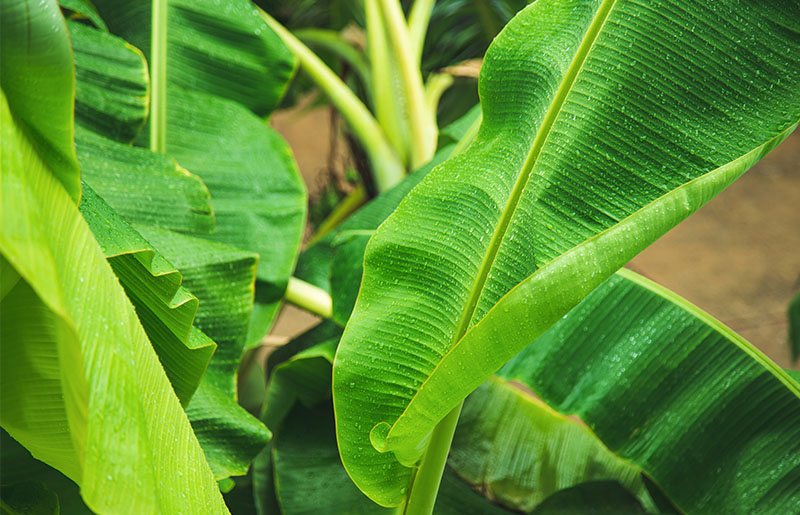
Bananas in Fort Bend County
by Deborah Birge, Fort Bend County Master Gardener
Bananas have become an in-demand plant in our area. This is even more so since the release of the Blue Java-ice cream variety. Although the plant is referred to as a banana tree, it is really an herbaceous perennial that rises from an underground corm. It is a pseudostem composed of tightly packed leaves. The true stem grows inside the pseudostem and the part from which flowers develop – the inflorescence – emerges from the top of the pseudostem.
Homeowners have enjoyed growing this easy to care for fruit tree. It has no pests, grows in all soil types, performs well in drought or flood and needs little fertilization. The one drawback is our occasional freezing winters.
Being a tropical plant, bananas prefer temperatures above 50 and will stop growing when temps reach 57F. Temperatures below 20F can kill a plant to the ground. This can be mitigated with winter protection. Mature plants need approximately 15 months to bloom depending on variety. If this is interrupted by a freeze, the plant will not bloom. Bananas are real sissies when it comes to temperatures and will also stop growing if it gets too hot.
Bananas grown commercially produce fruit stems approaching 100 pounds, but such yields are rare under Texas conditions. The more delicately flavored, small-fruited varieties may attain stem weights of 35 to 40 pounds. Most Texas producers readily accept production of stems having only two or three hands, although six to eight hands is more common.
The inflorescence, or blooming part of the plant is actually the 135 leaf to emerge. When blooming, the inflorescence arches out the top of the plant and hangs downward, with flowers hanging from the tip. It will take 2 to 3 months for these to fill out and begin to ripen. This will depend on growing conditions of course.
Bananas enjoy rich, fertile soils. This can be accomplished most easily by adding lots of mulch and organic matter. I throw everything in the grove and just keep piling it on. When fertilizing, use a slow release nitrogen. Bananas perform best when moisture is consistent. Too dry, too wet will affect the development of fruit.
Lastly, bananas enjoy the shelter of other bananas. Wind is very destructive for plant leaves often shredding or breaking them. This disrupts the photosyntheis process. In a grove, the outside plants can protect the ones in the inner circle. Once a plant blooms, it will begin to die. It is best to remove this plant, cutting it all the way to the ground. There will be “pups” or young plants at the base of this plant, often referred to as the mother plant. The pups will be one of two kinds; non-bearing, emerging with round, large leaves and bearing plants emerging with long pointed leaves. If space dictates removing some of the plants, remove the non-bearing plant.








